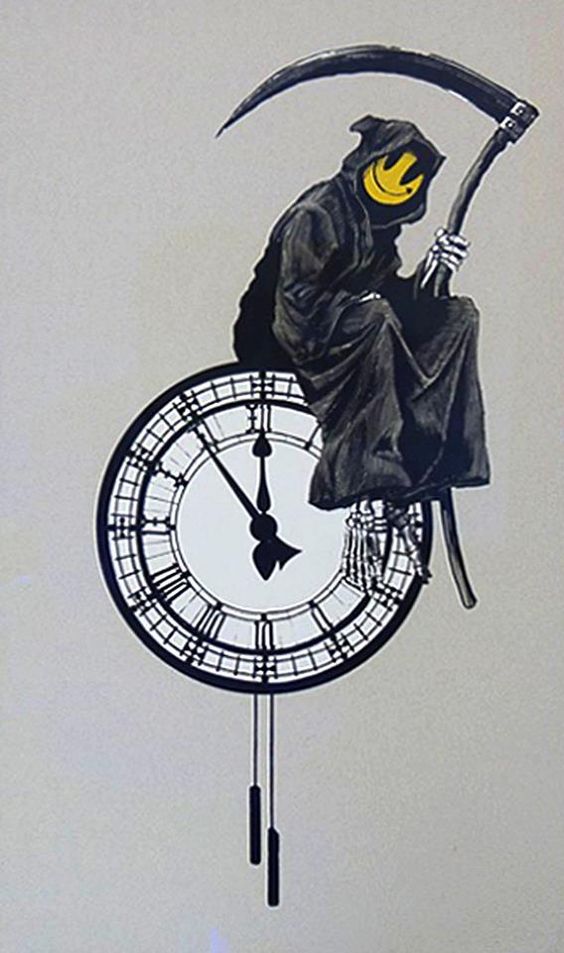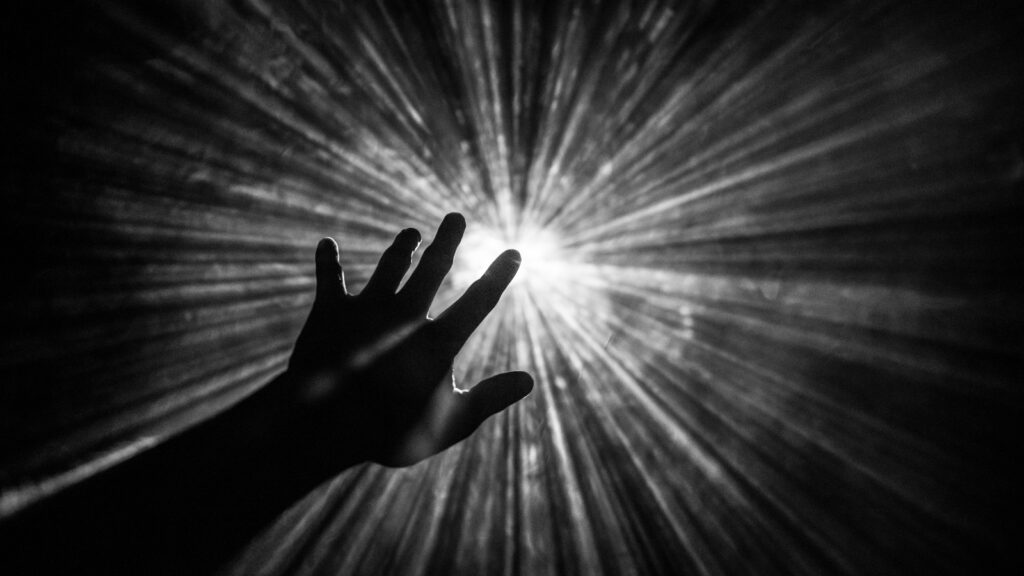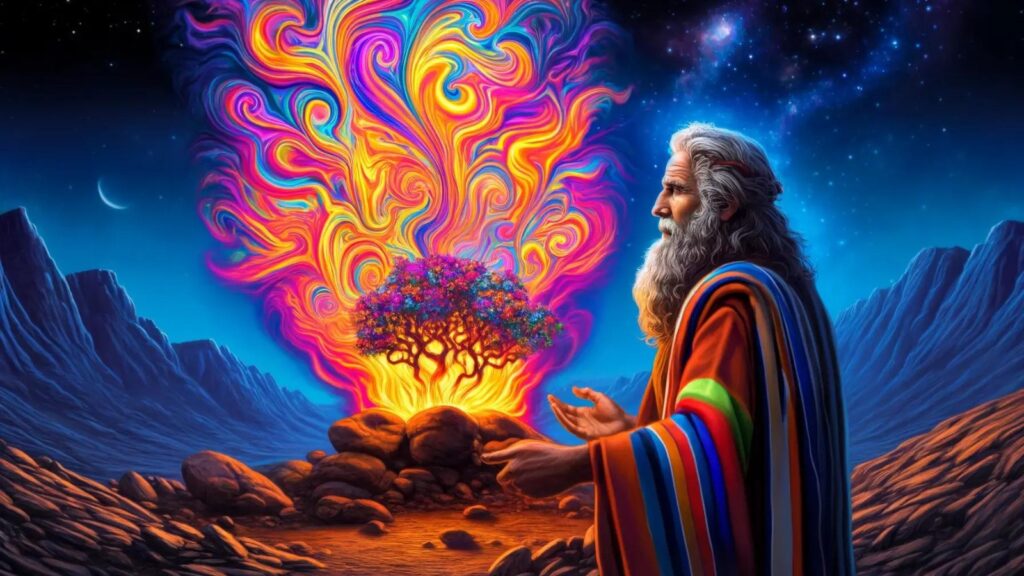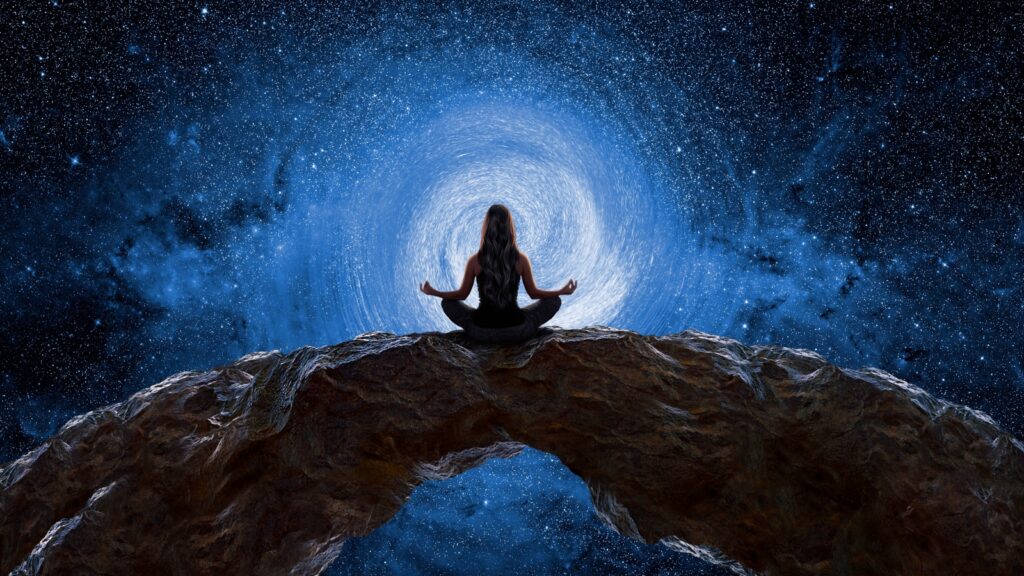In Western society, death is a taboo subject and, from the perspective of medical science, is viewed as a defeat and a failure. Medicine is excellent at keeping people alive but is a great deal poorer when it comes to easing the passage of the dying. In a sense, society has actually regressed in terms of the integration of death and dying, as medical science has grown in power and death has become a less common part of our lives. Existential anxiety, which includes fear and anxiety centered on death and dying, is something often overlooked and there is a notable lack of effective treatments or therapies, with physicians likely to feel underequipped in treating the psycho-spiritual effects of death anxiety (1, 2).
Despite the lack of currently integrated treatments, there are a number of avenues worthy of much more attention in this regard. Chief among them are the classical psychedelics, a group of substances long-used by humans in the context of healing and divination, which are currently experiencing a scientific research renaissance. Psychedelics may have a unique utility in their potential efficacy in the treatment of existential anxiety. While current research has focused on terminally ill patients, with respect to life we are all terminal, and it may likely be that the benefits of these substances are too important to limit to the treatment of sick people only, although this should be made a priority.
Aldous Huxley was a pioneer of this approach of using psychedelics for treatment of the dying, writing to pioneering psychedelic researcher Dr. Humphry Osmond in 1958 about how lysergic acid diethylamide (LSD) could be used to treat terminal cancer patients so their dying could be a “more spiritual, less strictly physiological process” (3). A few years later when Huxley—a man who talked the talk and walked the walk—lay dying from laryngeal cancer, he requested and received two 100µg dose injections of LSD from his wife Laura, who reported that his death was extremely beautiful and serene in a letter she wrote in 1963 to Aldous’s brother Julian (4).
A pioneering researcher and proponent of using psychedelics to treat the terminally ill was Dr. Walter Pahnke. Pahnke joined the Maryland Psychiatric Research Center in 1967 and conducted psychedelic therapy with LSD and N,N-dipropyltryptamine (DPT) until his untimely death in 1971 (5). He used LSD in the treatment of terminal cancer patients and wrote a number papers and book chapters with colleagues on his research findings during this time. One chapter published in Psi and altered states of consciousness: Proceedings of an International Conference on Hypnosis, Drugs, Dreams, and Psi looked at the effect of the mystical-type experience on terminal cancer patients and the potential implications for psi research (6). A paper published in the Journal of Psychedelic Drugs explored psychedelic therapy utilizing LSD with terminal cancer patients (7). As in the case of Huxley, Pahnke was motivated in part by his own personal mystical-type experiences catalyzed through his own psychedelic usage (8).
In central Africa, the oneirogenic (‘dream-inducing’) plant Tabernanthe iboga has a long history of use as a spiritual sacrament and medicine and is employed by a number of different groups such as the Bwiti in religious ceremonies. The Bwiti utilize a single large initiatory dose of the iboga plant, in the form of ingested root bark, consumed by the initiate to induce radical spiritual growth. This induces an experience resembling a near-death experience (NDE) in which the initiate is instructed to go beyond the body to the spiritual realms to seek guidance and insight on life issues via communing with their ancestors (9).
A number of recent studies have demonstrated both the safety and efficacy of classical psychedelics such as LSD and psilocybin in the treatment of existential anxiety and depression in the terminally ill. A pioneering pilot study by Grob et al. (2011) with psilocybin using a dose of 0.2 mg/kg reported safe physiological and psychological responses and no clinically adverse events. A reduction in anxiety was noted 1-3 months after treatment, with a long-term improvement in mood observed at six months (10). A study by Gasser et al. (2014) using LSD (at a dose of 200 µg) as a treatment for the anxiety associated with life-threatening diseases reported no lasting adverse reactions from LSD administration, long-term benefits sustained over a 12-month period following a single dose, and highly significant reductions in anxiety (in 77.8% of patients) and a rise in quality of life (in 66.7% of patients) (11).
Larger scale studies using psilocybin in the treatment of anxiety and depression suffered by patients with life-threatening cancer have built on this previous research. One study conducted by Griffiths et al. (2016) at Johns Hopkins University using doses of 22 and 30 mg/70 kg found that 80% of patients reported lower depression and anxiety at a six-month follow-up including reduced death anxiety and increased quality of life, life meaning, and optimism. Study participants reported improved attitudes towards life and self and improved mood, relationships, and spirituality with over 80% of participants describing greater well-being and life satisfaction. It is notable that the mystical-type experiences occurring through psilocybin treatment mediated the long-term therapeutic outcomes (12). A study conducted by Ross et al. (2016) at New York University utilizing a psilocybin dose of 0.3 mg/kg reported similar results, with study participants reporting immediate, substantial, and sustained improvements in anxiety and depression, with decreases in cancer-related demoralization and hopelessness, improved spiritual well-being, and increased quality of life. Enduring clinically significant reductions in anxiety, sustained reductions in existential distress, increased quality of life, and an improved attitude towards death were each reported by a majority of participants. Again, it was noted that the psilocybin-catalyzed mystical experience mediated the long-term therapeutic effect on anxiety and depression (13).
It can be seen from these studies that the mystical-type experiences reliably catalyzed through high-dose psilocybin are a core part of their long-term therapeutic effect on depression and anxiety ratings, while enhancing life meaning and outlook. It seems, too, that the mystical experience is of great importance with regard to altering perceptions of death and reducing death anxiety. Facets of the mystical experience such as the sense of unity, perceived interconnectedness of all things, a deep sense of love, reverence, sacredness, and noetic quality are very likely contributing to the uplifting attitudinal shifts towards death but also towards self, life, and others. A recently published study by Griffiths et al. (2017) utilizing high doses of 20 mg and 30 mg/70 kg psilocybin found that mystical experiences in synergy with spiritual practices produced large significant positive changes for a number of trait measures of prosocial attitudes, behaviors, and perspectives, among them death transcendence (14). This study is notable in that unlike all the aforementioned studies, study participants were physically and mentally healthy and not terminally ill. However, significant numbers of these participants reported death transcendence under high-dose psilocybin, suggesting that such a shift in perspective is something intrinsic to this experience.
Medicine and psychiatry operate under the paradigm of drugs affecting patients for the duration of time they are in a patient’s system. The research described here demonstrates that a single dose of a classical psychedelic like psilocybin administered in a psychotherapeutic setting can produce highly beneficial long-term psychotherapeutic effects, lasting months to a year or more. This is an entirely novel, unprecedented, and potentially revolutionary finding which currently lacks a clear scientific explanation.
Treatment of rational suicide in the elderly is another unexplored frontier where psychedelics could hold promise. Rational suicide can be defined as suicide of the elderly to escape suffering or due to a weariness of living due to age-related losses. Psychedelic experiences in a psychotherapeutic context may help foster a sense of life-meaning and positive outlook and promote the perception that life is worth living, even in conditions of great adversity (15).
The mystical or transcendent experience catalyzed through psychedelics seems to be a key part of their long-term therapeutic efficacy and to be strongly linked to the reduction of death anxiety. These experiences may allow patients to experience a sense of connectedness to the sacred, to enhance relationships with family and loved ones, to live fully in the moment with equanimity, and to make the most of their remaining time. Through their experience with the psychedelic, individuals may be able to transcend their primary identification with their physical bodies and experience ego-free states, or ego death, which in turn may generate a new perspective and acceptance. It seems likely this facet of the psychedelic-induced mystical experience is a key factor linked to a long- term reduction in death anxiety. In the recent psilocybin studies described above, it was also noted that encounters with death or dying were common in people’s experiences. Such experiences would vary widely in content between different individuals, with some feeling their consciousness as something separate from their physical body that will survive its demise (16).
Whether the experiences reported by study participants are valid or illusionary is of secondary importance to the psychotherapeutic benefits these experiences have for the experiencer in question. To paraphrase pioneering psychologist and philosopher William James in his seminal book The Varieties of Religious Experience the value of mystical experiences can only be judged “by their fruits” not “by their roots” (17). Furthermore, the psychological symptoms of existential distress share a great deal of overlap with those of a hyperactive default-mode network, a part of the brain that psilocybin is known to quiet (18).
Psilocybin may be particularly well suited for use in palliative care scenarios. It doesn’t carry the same political or cultural baggage of LSD and is shorter acting than the latter with less chance of yielding adverse reactions. It is non-toxic, physiologically well tolerated, and suitable for use by the terminally ill (19). In the future, it could be administered in family groups in a supportive setting. Psilocybin is used in family settings by indigenous groups such as the Mazatec in Mexico (20) and, due to psilocybin’s ability to lower psychological armor and facilitate communication, it could be an excellent catalyst for family groups to connect and say their goodbyes to loved ones with an openness that may otherwise not be easily accessible.
The psychedelic compound 5-methoxy-N,N-dimethyltryptamine (5-MeO-DMT) has received very little scientific research attention at the present time. It may, however, be well suited to treating death anxiety. 5- MeO-DMT treatment-provider Dr. Geraldo “Gerry” Ruben Sandoval Isaac conducted a 10-year retrospective study with 1,699 participants and noted that 85% reported a mystical or religious experience and that 60% experienced some form of dying or death (21). This is twice the 30% reported in the Johns Hopkins psilocybin trials of study participants reporting profound experiences of their own death. This is a notable result, as it can be seen from the aforementioned psilocybin research that the mystical experience that psychedelics can catalyze is a core component of their long-term psychotherapeutic effect in the treatment of existential anxiety. In addition, a simulated or hallucinatory experience of death or dying can be highly cathartic with regard to people’s death anxiety. This study is suggestive that 5-MeO-DMT can induce both experiences with high levels of consistency, so it may be that this compound is particularly well suited for the treatment of death anxiety. The phenomenological effects of 5-MeO-DMT are somewhat atypical in comparison to other classical psychedelics and seem to more closely resemble NDEs in experiential content (22). Luke and Kittenis (2005) found that reported death-related experiences (death, rebirth, or memory of a past life) tended to be more commonly associated with 5-MeO-DMT than any other substance (23).
5-MeO-DMT is a great deal more powerful than the other classical psychedelics such as psilocybin and LSD, so it requires careful handling, and session preparation and integration will be highly important to maximize experiential benefits. However, the experience is a great deal shorter than that yielded by the other psychedelics like psilocybin or LSD, so it would be much less taxing on treatment providers’ time.
During a program of psychedelic therapy with terminal cancer patients conducted by Dr. Stanislav Grof at the Maryland Psychiatric Research Center in Baltimore, a number of patients reported NDEs as their diseases progressed, and they reported their prior psychedelic experiences as being very similar to their NDEs and being an invaluable experiential training for dying (24). Both NDEs and psychedelics share a capacity for being able to change human personality in the long-term following an experience. This quantum change (25) in personality yielded by experiences catalyzed via NDEs and psychedelics are distinct from one another but also share some interesting overlap. The personality changes yielded by a classic NDE can be considered as being deeper, more comprehensive, and more robust than those yielded by psychedelics such as psilocybin which tend to be more specific, in particular affecting the personality domain of openness (26). Openness includes a hunger for knowledge, and this, too, has been highlighted by experiencers of NDEs (NDErs) as a long-term effect of their experiences (27). An increase in well-being, life satisfaction, and sense of life-purpose or meaning are also commonly reported after-effects of both NDEs and psychedelic-induced mystical experiences (28), and a negative relation between purpose in life and death anxiety has also been observed (29).
An interesting property of NDEs is that simply learning about them can promote psycho-spiritual benefits and result in changes of outlook regarding death in people without direct experience of one similar to an NDEr. Learning about NDEs through reading or hearing about them can result in such changes, but direct testimony from an NDEr seems to be the most powerful medium of transformation. A number of NDE researchers have noted such changes in outlook themselves, with Dr. Kenneth Ring being one of the pioneering NDE researchers who first noted this phenomenon, describing it as a “benign virus” in reference to it being positively psychologically contagious (30). A number of independent studies such as those by Rominger (2009) and Tassell-Matamua et al. (2016) have further validated the existence of this interesting psychological phenomenon, and found that while it occurs in those at high risk of death, such as the terminally ill and those with suicidal ideation, it also occurs among clinically healthy populations (31, 32). Thus, in learning about the NDE and people’s experiences, one can reap much of the benefit of the experience without the inherent risk of being near death.
A core component of the NDE is the out-of-body experience (OBE). A common anecdotal side effect of OBEs is that people lose their fear of death, something noted by pioneering OBE explorer Robert Monroe in his book Journeys Out of the Body (1971) and others (33). Even a virtual OBE induced via virtual reality (VR) technology is capable of reducing death anxiety (34). This further suggests that it is the experience of being disembodied and transcending the primary identification with the physical body that is a common link and a core experiential and psychotherapeutic component shared by the OBE, NDE, and psychedelic experience and likely an integral part of its efficacy in reducing death anxiety. Moreover, there seems to be a great deal of reported phenomenological overlap between NDEs and OBEs in particular. Unlike the obvious risks involved in the generation of NDEs and the illegality of psychedelics, OBEs can, with practice, be induced voluntarily and safely.
As an aside to psychedelic therapy, NDEs, and OBEs, other consciousness practices such as holotropic breathwork have been found to reduce death anxiety (35). Holotropic breathwork is an effective alternative and legal means of accessing transpersonal states that may have useful applications for the treatment of existential anxiety. Mindfulness meditation may also have potential in alleviating existential anxiety, with a mindful outlook showing efficacy in its ability to neutralize fears of death and dying (36).
It can be seen that there are a number of interesting avenues that warrant further attention in relation to direct experiences, consciousness-related practices, and simply learning about these experiences from others. Given that death is something shared by all, and given that it is an unavoidable and inevitable part of our lives, it seems there could be great potential benefit in giving these experiences the attention they deserve. It seems that these various experiences may all lessen death anxiety, but the benefits may transcend this alone. A simulated dying event before one’s actual dying may serve not only to reduce death anxiety but also act to reinforce one’s life priorities in a positive fashion while alive.
This article was originally published in Threshold: Journal of Interdisciplinary Consciousness Studies:
Gandy, S. (2017). Dying to live: The power of transcendence in the treatment of existential anxiety. Threshold: Journal Of Interdisciplinary Consciousness Studies, 1(2), 25-36.
Retrieved from http://tjics.org/index.php/TJICS/article/view/14
Breaking Convention 2017
References
- Lehto, R. H. & Stein, K. F. (2009). Death anxiety: An analysis of an evolving concept.
Research and Theory for Nursing Practice, 23(1), 23–41. doi:10.1891/1541-6577.23.1.23
- Bates, A. T. (2016). Addressing existential suffering. BC Medical Journal, 58(5), 268 273.
- Huxley, A. L. (1999). Moksha: Aldous Huxley’s classic writings on psychedelics and the visionary experience. South Paris, ME: Park Street Press.
- Huxley, L. A. (1968). This timeless moment: Personal view of Aldous Huxley. San Francisco, CA: Mercury House.
- Coomber, R. (1998). The control of drugs and drug users: Reason or reaction? Boca Raton, FL: CRC Press, LLC.
- Pahnke, W. N. (1968). The psychedelic mystical experience in terminal cancer patients and its possible implications for psi research. In R. Cavanna & M. Ullman (Eds.), Psi and altered states of consciousness: Proceedings of an International Conference on Hypnosis, Drugs, Dreams, and Psi (pp. 115–128). New York, NY: Parapsychology Foundation.
- Pahnke, W., Kurland, A., Unger, S., Savage, C., Wolf, S. & Goodman, L. (1970). Psychedelic therapy (utilizing LSD) with cancer patients. Journal of Psychedelic Drugs, 3, 63–75. doi:10.1080/02791072.1970.10471363
- Pahnke, W. (1964, March 31). First impressions of first LSD experience of March 30, 1964. Purdue University Libraries Psychoactive Substances Collection. Retrieved from http://earchives.lib.purdue.edu/cdm/singleitem/collection/psyc/id/7
- Barabe, P. (1982). The religion of Iboga or the Bwiti of the Fangs. Medicina Tropical, 12, 251–257.
- Grob, C. S., Danforth, A. L., Chopra, G. S., Hagerty, M., McKay, C. R., Halberstadt, A. L., & Greer, G. R. (2011). Pilot study of psilocybin treatment for anxiety in patients with advanced-stage cancer. Archives of General Psychiatry, 68(1), 71–78. doi:10.1001/archgenpsychiatry.2010.116
- Gasser, P., Holstein, D., Michel, Y., Doblin, R., Yazar-Klosinski, B., Passie, T., & Brenneisen, R. (2014). Safety and efficacy of lysergic acid diethylamide-assisted psychotherapy for anxiety associated with life-threatening diseases. The Journal of Nervous and Mental Disease, 202(7), 513–520. doi:10.1097/NMD.0000000000000113
- Griffiths, R. R., Johnson, M. W., Carducci, M. A., Umbricht, A., Richards, W. A., Richards, B. D., …Klinedinst, M. A. (2016). Psilocybin produces substantial and sustained decreases in depression and anxiety in patients with life-threatening cancer: A randomized double- blind trial. Journal of Psychopharmacology, 30(12), 1181–1197. doi:10.1177/0269881116675513
- Ross, S., Bossis, A., Guss, J., Agin-Liebes, G., Malone, T., Cohen, B., …Schmidt, B. L. (2016). Rapid and sustained symptom reduction following psilocybin treatment for anxiety and depression in patients with life-threatening cancer: A randomized controlled trial. Journal of Psychopharmacology, 30(12), 1165–1180. doi:10.1177/0269881116675512
- Griffiths, R. R., Johnson, M. W., Richards, W. A., Richards, B. D., Jesse, R., MacLean, K. A.,…Klinedinst, M. A. (2017). Psilocybin-occasioned mystical-type experience in combination with meditation and other spiritual practices produces enduring positive changes in psychological functioning and in trait measures of prosocial attitudes and behaviours. Journal of Psychopharmacology. Advance online publication. doi:10.1177/026988111773127
- Hendricks, P. S. & Grob, C. S. (2016). Classic psychedelics and rational suicide in the elderly: Exploring the potential utility of a reemerging treatment paradigm. In R. E. McCue and M. Balasubramaniam (Eds.), Rational suicide in the elderly: Clinical, ethical, and sociocultural aspects (pp. 203–210). New York, NY: Springer.
- Pollan, M. (2015, February 9th). The trip treatment. The New Yorker. Retrieved from https://www.newyorker.com/magazine/2015/02/09/trip-treatment
- James, W. (1902). The varieties of religious experience: A study in human nature, being the Gifford lectures on natural religion delivered at Edinburgh in 1901-1902. New York, NY: Longmans, Green & Co.
- Carhart-Harris, R. L., Erritzoe, D., Williams, T., Stone, J. M., Reed, L. J., Colasanti, A., …Nutt, D. J. (2012). Neural correlates of the psychedelic state as determined by fMRI studies with psilocybin. Proceedings of the National Academy of Sciences of the United States of America, 109, 2138–2143. doi:10.1073/pnas.1119598109
- Carhart-Harris, R. L., Roseman, L., Bolstridge, M., Demetriou, L., Pannekoek, J. N., Wall, M. B., …Nutt, D. J. (2017). Psilocybin for treatment-resistant depression: fMRI-measured brain mechanisms. Scientific Reports, 7, 13187. doi:10.1038/s41598-017-13282-7
- Munn, H. (1973). The mushrooms of language. In M. J. Harner (Ed.), Hallucinogens and shamanism (pp. 86–122). London: Oxford University Press.
- Isaac, G. R. S. (2016). Vaporizing 5-MeO-DMT from Bufo alvarius as an entheogen: A retrospective case control study. In G. R. S. Isaac, The God Molecule: 5-MeO-DMT and the spiritual path to divine light (pp. 148–155). Studio City, CA: Divine Arts Press.
- Oroc, J. (2009). Tryptamine palace: 5-MeO-DMT and the Sonoran Desert Toad. South Paris, ME: Park Street Press.
- Luke, D. P., & Kittenis, M. (2005). A preliminary survey of paranormal experiences with psychoactive drugs. Journal of Parapsychology, 69(2), 305–327.
- Grof, S., Grob, C. G., Bravo, G., & Walsh, R. (2008). Birthing the transpersonal. The Journal of Transpersonal Psychology, 40(2), 155–177.
- C’de Baca, J., & Wilbourne, P. (2004). Quantum change: Ten years later. Journal of Clinical Psychology, 60(5), 531–541. doi:10.1002/jclp.20006
- MacLean, K. A., Johnson, M. W., & Griffiths, R. R. (2011). Mystical experiences occasioned by the hallucinogen psilocybin lead to increases in the personality domain of openness. Journal of Psychopharmacology, 25(11), 1453–1461. doi:10.1177/0269881111420188
- Sartori, P. (2014). The wisdom of near-death experiences: How understanding NDEs can help us to live more fully. London: Watkins Publishing Limited.
- Noyes, R. (1980). Attitude change following near-death experiences. Psychiatry: Interpersonal and Biological Processes, 43(3), 234–242. doi:10.1080/00332747.1980.11024070
- Drolet, J.-L. (1990). Transcending death during early adulthood: Symbolic immortality, death anxiety, and purpose in life. Journal of Clinical Psychology, 46(2), 148–169. doi:10.1002/1097-4679(199003)46:2<148::AID-JCLP2270460205>3.0.CO;2-T
- Ring, K. (1995). The impact of near-death experiences on persons who have not had them: A report of preliminary study and two replications. Journal of Near Death Studies, 13(4), 223–235. Retrieved from: https://digital.library.unt.edu/ark:/67531/metadc799331/
- Rominger, R. (2009). Exploring the aftereffects of the near-death experience: Brief summary of findings. Journal of Near-Death Studies, 28(1), 5–30. Retrieved from: https://digital.library.unt.edu/ark:/67531/metadc461753/
- Tassell-Matamua, N., Lindsay, N., Bennett, S., Valentine, H., & Pahina, J. (2016). Does learning about near-death experiences promote psycho-spiritual benefits in those who have not had a near-death experience? Journal of Spirituality in Mental Health, 19(2), 95–115. doi:10.1080/19349637.2016.1206844
- Monroe, R. (1971). Journeys Out of the body. New York, NY: Doubleday.
- Bourdin, P., Barberia, I., Oliva, R., & Slater, M. (2017). A Virtual Out-of-Body Experience Reduces Fear of Death. PLoS ONE, 12(1): E0169343. doi:10.1371/journal.pone.0169343
- Holmes, S. W., Morris, R., Clane, P. R., & Putney, R. T. (1996). Holotrophic breathwork: An experiential approach to psychotherapy. Psychotherapy, 33, 114–120. doi:10.1037/0033-3204.33.1.114
- Niemiec, C. P., Brown, K. W., Kashdan, T. B., Cozzolino, P. J., Breen, W. E., Levesque-Bristol, C., & Ryan, R. M. (2010). Being present in the face of existential threat: The role of trait- mindfulness in reducing defensive responses to mortality salience. Journal of Personality and Social Psychology, 99(2): 344. doi:10.1037/a0019388










